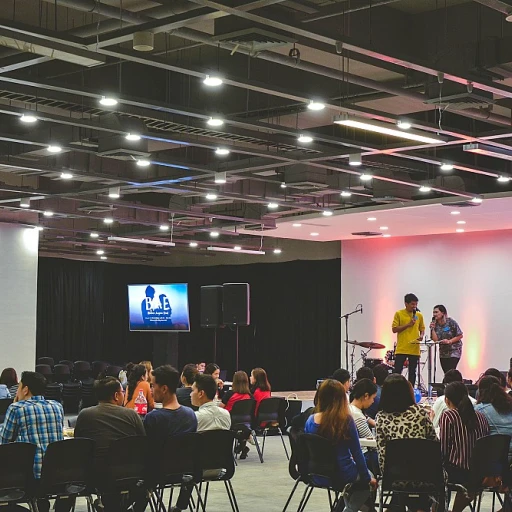Understanding High Potential Employees
Recognizing High Potential Employees
In today's competitive business environment, identifying high potential employees is crucial for sustaining growth and innovation. These individuals, often referred to as HiPos, are not just high performers; they possess the ability to grow and adapt to new challenges, making them invaluable assets to any organization. Understanding who these employees are and what sets them apart is the first step in leveraging their capabilities for the benefit of the company.
Characteristics of High Potential Employees
High potential employees typically exhibit a combination of skills and attributes that distinguish them from their peers. They often demonstrate exceptional performance in their current roles and show a strong capability for leadership and problem-solving. Here are some key traits:
- Adaptability: The ability to adjust to new situations and challenges with ease.
- Leadership potential: A natural inclination towards guiding and influencing others.
- Drive for results: A strong motivation to achieve goals and improve performance consistently.
- Learning agility: A keen ability to learn from experiences and apply that knowledge effectively.
Recognizing these characteristics early can help managers and HR professionals tailor development plans to nurture these talents effectively. This involves not just providing feedback but also setting clear goals and offering the necessary resources and support to facilitate growth.
The Importance of a Structured Approach
For organizations to fully capitalize on the potential of these employees, it is essential to have a structured approach in place. This includes implementing performance improvement plans (PIPs) that are specifically designed to enhance the skills and capabilities of high potential employees. These plans should be clear, specific, and time-bound, providing a roadmap for improvement and growth.
Regular check-ins and performance reviews are vital components of this process, ensuring that employees receive the feedback and support they need to progress. By setting up a robust performance management system, companies can help employees identify areas for improvement and track their progress over time.
As the workforce continues to evolve, particularly with the rise of remote work, navigating these challenges becomes even more critical. For more insights on how to address these challenges, consider exploring strategies for navigating remote work training and development challenges.
The Role of Performance Improvement Plans
Unlocking the Value of Performance Improvement Plans for Employees
Performance Improvement Plans (PIPs) are essential tools in addressing performance issues and fostering a culture of growth and development. When employees face challenges, PIPs provide structured paths to improvement, helping employees align with organizational goals. PIPs serve as a pathway for improvement by identifying specific areas for employee development. These plans are crafted by managers with clear objectives, providing a transparent process for both employees and the team. Key components include setting clear, attainable goals and outlining a timeline to gauge progress. The ultimate aim is to refine employee performance through regular check-ins and constructive feedback. The pip process involves several critical elements to help employees succeed:- Clear objectives: Define specific goals and expectations to guide improvement.
- Regular check-ins: These ensure ongoing employee progress, allowing managers to provide timely feedback and support.
- Resources and support: Offer necessary tools and training to empower employees in their improvement journey.
- Action plan: Develop a strategic plan that includes milestones for measuring success and growth.
Crafting Effective Training Programs
Developing Targeted Training Programs
Crafting effective training programs is crucial to address performance improvement among high potential employees. Focusing on personalized action plans can significantly help employees achieve clearer outcomes. Here are some key considerations for developing a robust training program:- Identify Specific Goals: Establish clear objectives that align with the areas for improvement identified in performance management reviews. This ensures that resources support the intended progress.
- Engage Managers and Teams: Involve team members and managers in the planning process. Their insights can streamline the employee’s path towards improvement by providing valuable feedback and pinpointing performance issues.
- Offer Regular Check-ins: Schedule ongoing check-ins to monitor progress. These sessions serve as a performance review, allowing for timely adjustments and continued support.
- Utilize Multiple Training Methods: Combine various training methods such as workshops, mentorship programs, and online courses to cater to different learning styles and make use of all available resources.
- Implement Feedback Loops: Continuous feedback during the training period enhances the pip process and helps adapt the program based on evolving needs.
Measuring Success and Growth
Evaluating Progress and Setting Benchmarks
To effectively measure the success and growth of high potential employees, it's crucial to establish clear benchmarks and regularly evaluate progress. This process involves setting specific, measurable goals within the performance improvement plan (PIP). These goals should align with both the employee's personal development and the broader objectives of the organization.
Regular Check-Ins and Feedback Loops
Regular check-ins between the employee and their manager are vital. These sessions provide an opportunity to discuss progress, address any performance issues, and adjust the plan if necessary. Feedback should be constructive, focusing on areas of improvement while also acknowledging achievements. This ongoing dialogue helps employees stay motivated and on track.
Utilizing Performance Metrics
Implementing performance metrics is another essential component of measuring success. These metrics should be part of the PIP process and can include quantitative data such as sales numbers or qualitative assessments like peer reviews. By analyzing these metrics, managers can provide targeted support and resources to help employees improve performance.
Celebrating Milestones
Recognizing and celebrating milestones is an important aspect of the improvement plan. When employees reach specific goals or demonstrate significant progress, it not only boosts morale but also reinforces the value of the PIP. This recognition can be a powerful motivator, encouraging continued effort and commitment.
Adjusting the Plan as Needed
Finally, flexibility is key in any performance management strategy. As employees grow and develop, their needs and goals may change. It's important for managers to be open to adjusting the PIP to better support the employee's evolving career path. This adaptability ensures that the improvement plan remains relevant and effective over time.
Common Challenges and Solutions
Addressing Common Obstacles
Effective performance improvement plans (PIPs) can significantly benefit employees, providing the necessary support for enhancing their skills. However, implementing these plans is not without its challenges. Identifying and addressing these obstacles is crucial to the success of the improvement plan.- Unclear Goals and Expectations: One major issue arises when goals set within the PIP are ambiguous. Clear and specific objectives are essential for guiding employee performance and progress. Managers should ensure that objectives are realistic and achievable, providing a roadmap for improvement.
- Lack of Feedback and Support: Regular check-ins and ongoing feedback are vital components of the PIP process. Employees require guidance and resources to aid their development. Managers must be proactive, ensuring that employees receive the necessary support to address areas ripe for improvement.
- Inadequate Support from Managers: Managers play a crucial role in the success of PIPs. Their consistent involvement is necessary for monitoring employee progress, as well as for making adjustments to plans when needed. Managerial support can make or break the effectiveness of the training program.
- Resistance to Change: Employees may resist the PIP process if they view it as punitive rather than constructive. Communicating the intentions behind a PIP—focused on improving employee performance and development—is key to overcoming this resistance. This requires fostering an open and supportive environment where employees feel valued and understood.
- Time Management: Balancing PIP-related activities with daily responsibilities can be overwhelming for employees and managers alike. To address this, it is important to allocate appropriate time for both training and regular duties, ensuring that performance management does not disrupt overall productivity.
Future Trends in Employee Development
Emerging Trends in Employee Development Strategies
As businesses endeavor to harness the potential of high-performing teams, the landscape of employee development is evolving. Shifts in technology, work culture, and employee expectations drive adaptation in performance improvement strategies. Here's a look at some current trends shaping the future of employee development.
- Integration of Technology in Training: Digital tools are becoming essential in crafting effective training programs. Online platforms and virtual training sessions provide employees with the flexibility to improve performance at their own pace and convenience.
- Focus on Agile Feedback Mechanisms: Instead of relying solely on annual performance reviews, modern companies emphasize regular check-ins. This approach allows managers to provide clearer, immediate feedback and support that helps employees adjust their goals and action plans in real-time.
- Personalized Development Plans: Tailoring improvement plans to fit individual employee progress and areas for improvement is gaining traction. Custom plans enable employees to set specific, measurable goals, improving the pip process significantly.
- Collaborative Learning Environments: Teams are encouraged to engage in peer-to-peer learning, which fosters a sense of community and shared responsibility in performance improvement. This approach also supports continuous improvement in employee performance and problem-solving skills.
- Increased Emphasis on Emotional Intelligence: Recognizing the importance of emotional intelligence (EQ) in leadership and teamwork, some organizations are incorporating EQ training into their development programs. This element helps to nurture well-rounded employees capable of managing performance issues more effectively.
The future of performance management calls for a holistic view of employee development, with a focus on dynamic and adaptive strategies. By keeping up with these trends, organizations can better equip their employees to achieve their potential and meet the evolving demands of the modern workplace.





